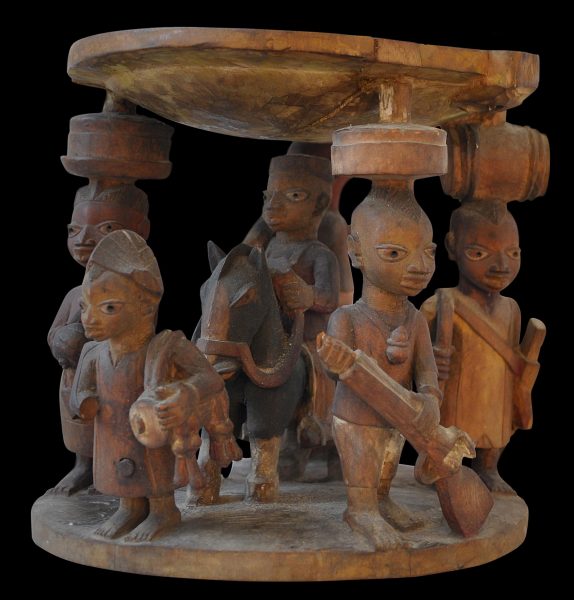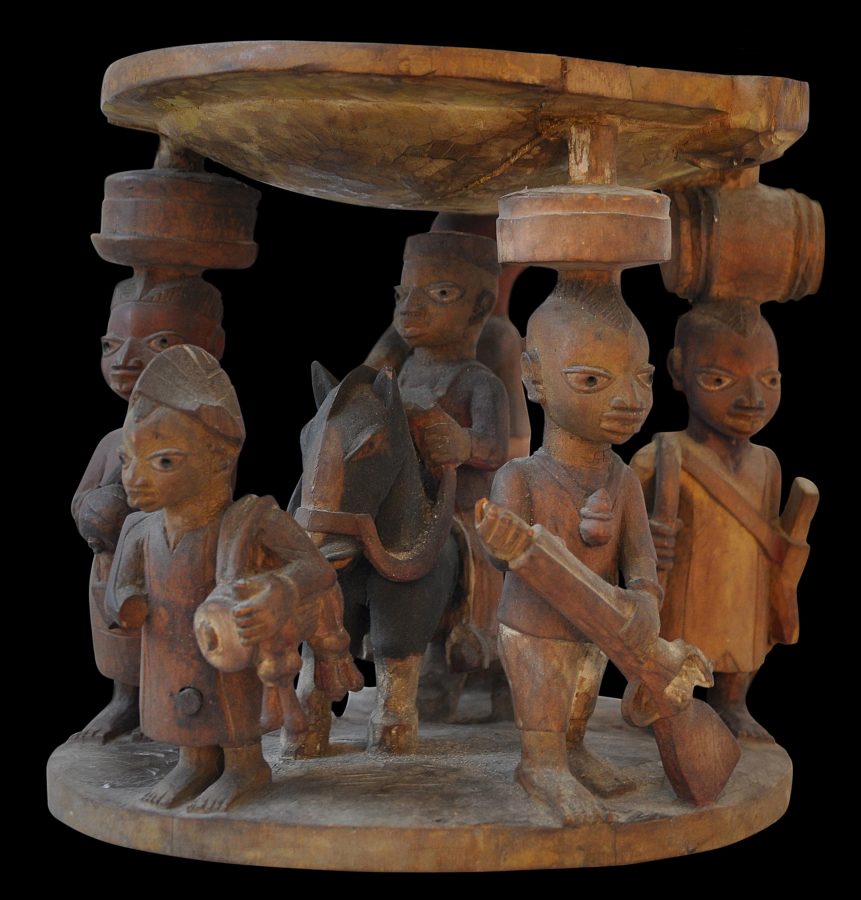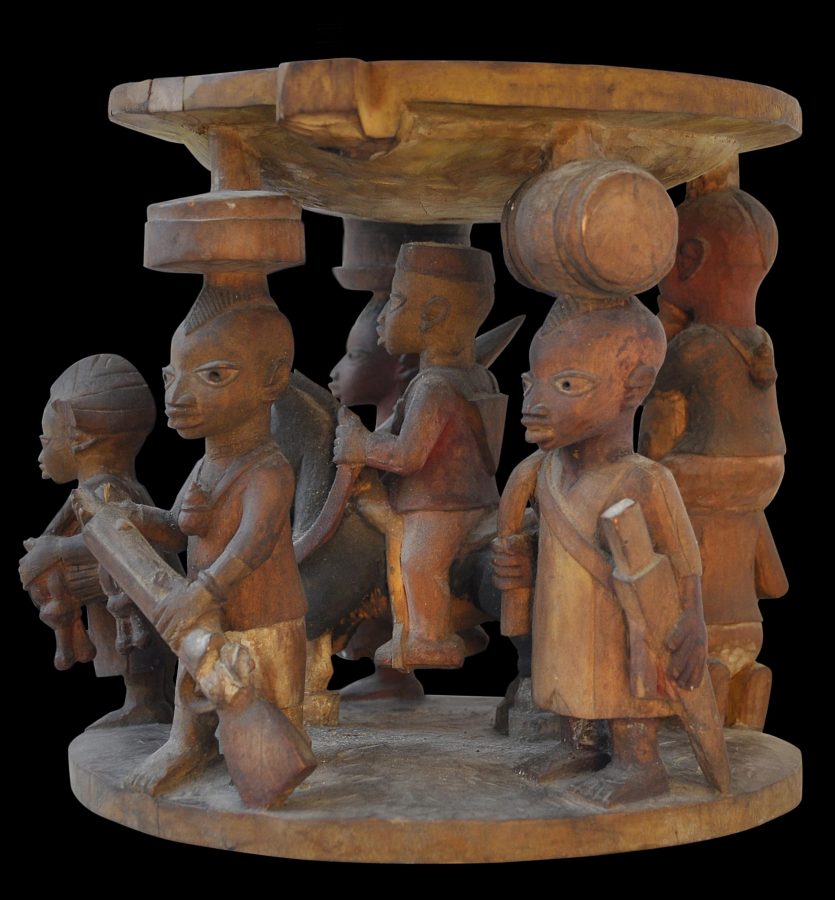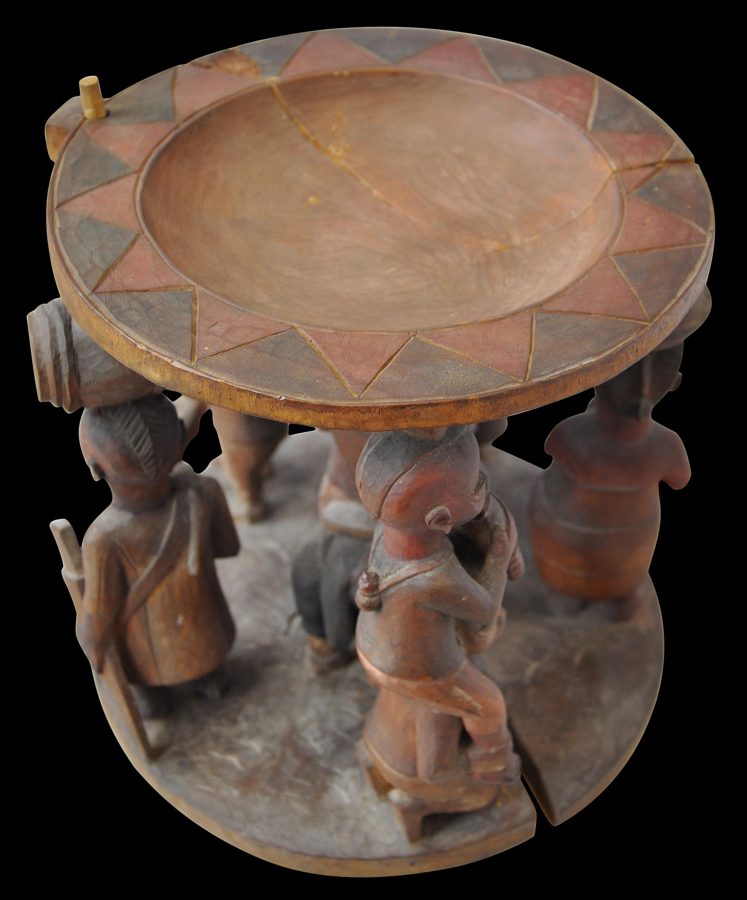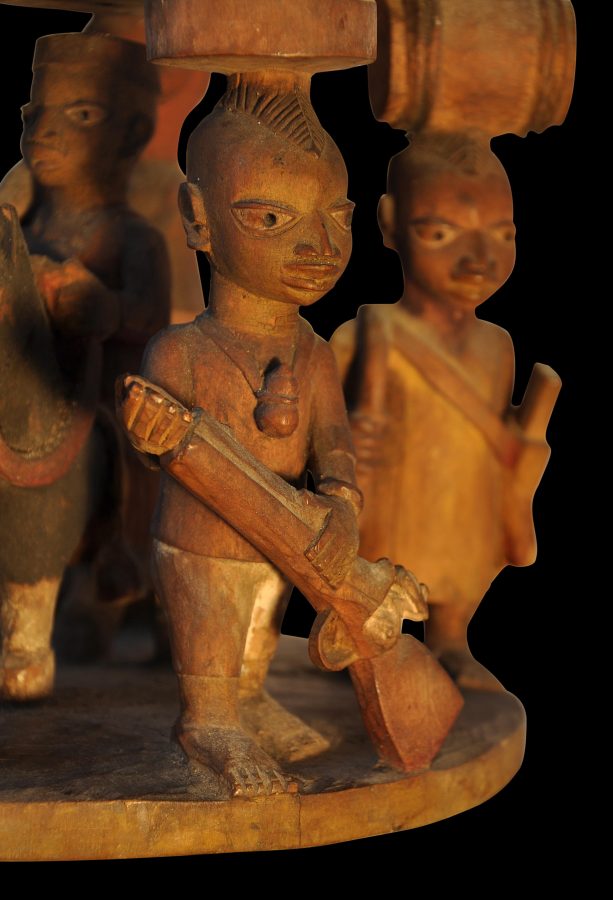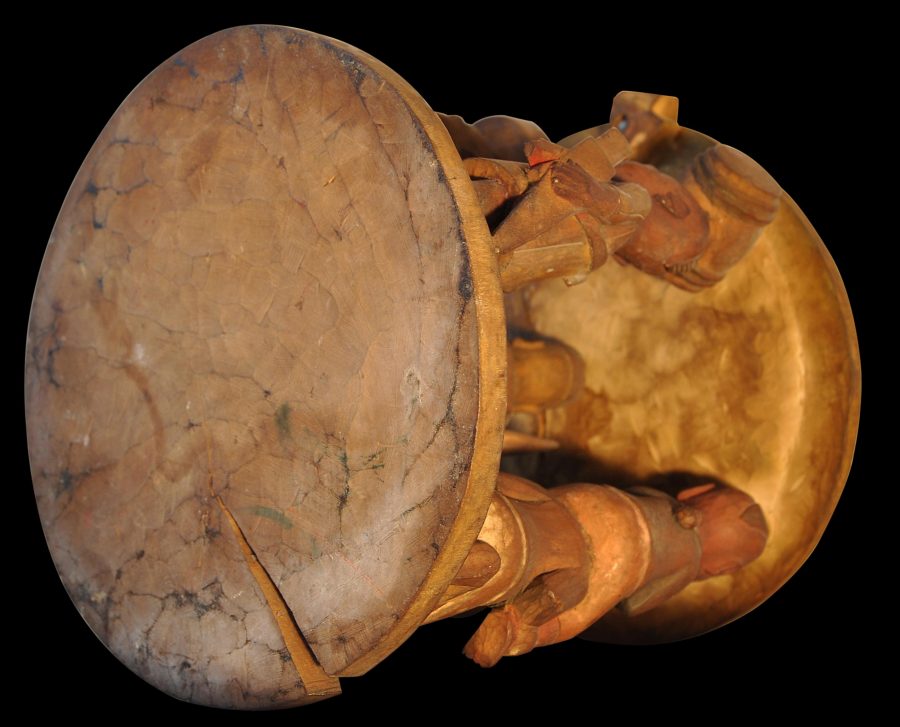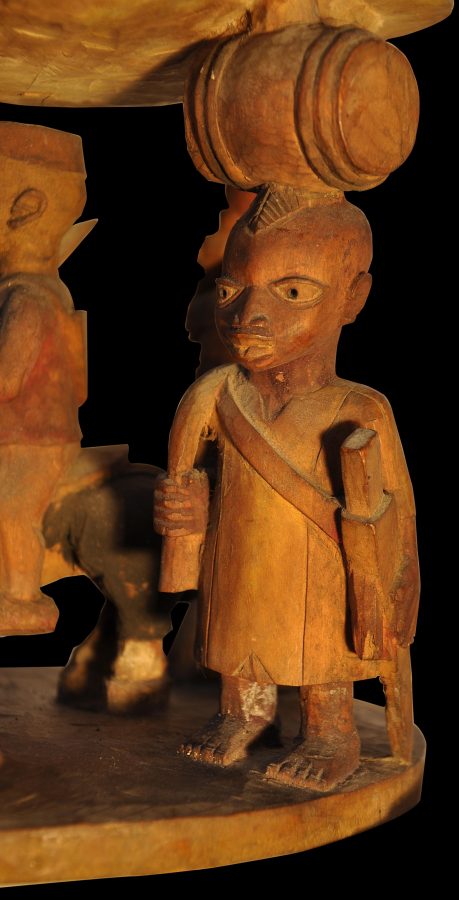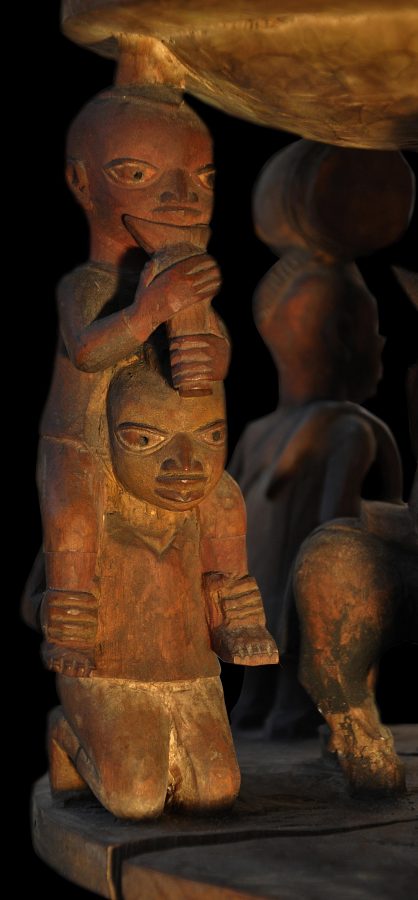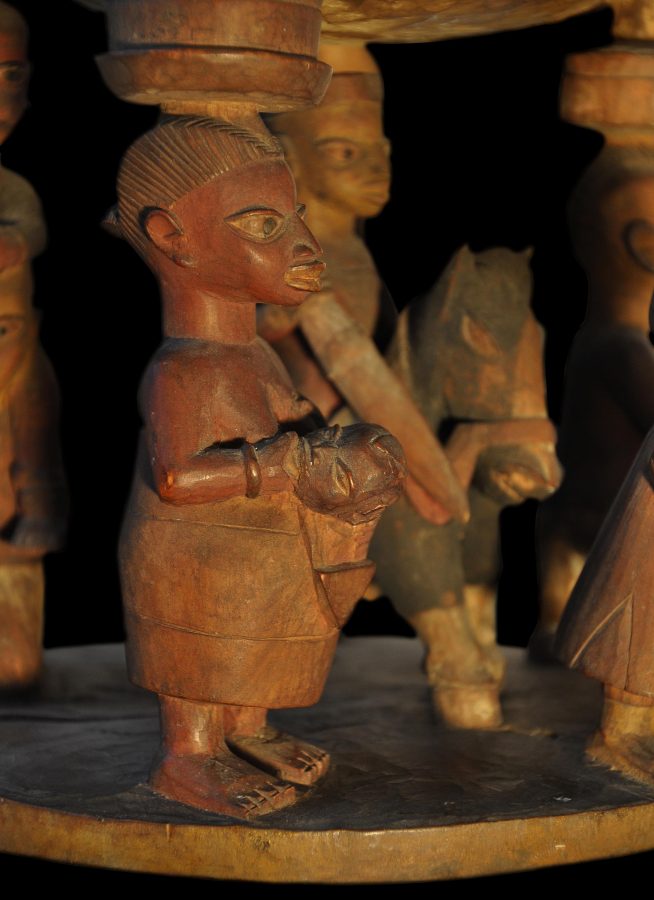This Yoruba divination bowl is particularly finely carved. The figures are well defined and well spaced, enhancing the bowl’s overall sculptural qualities.
The bowl’s hemispherical basin has black and red triangles about the rim. The supports are carved as various well-observed figures including one on horseback, one with a flintlock gun, one suckling a child and with a round box balanced on her head, another carries a barrel balanced on his head, and another carries an older child on his shoulders who appears to be carrying a shango staff and has a drinking gourd strung behind his back.
Light coloured pigments are still visible on the figures’ clothing and hair.
The scene is particularly fluid and dynamic: each of the figures seems to move with great purpose, no more so than a figure of a small girl who wears a large hat and carries a bag over her left shoulder. She stands on the very edge of the base and leans right out beyond it.
The bowl has a fine patina consistent with a circa 1920s dating. There is some old, shrinkage-related cracking to the wood as is usual. The bowl itself has a crack with some evident re-gluing and an old mend. Most of the figures are in perfect condition; one has the minor loss of a hand.
The piece was acquired in the UK and most probably has been in the UK since the colonial era.
See Lot 110 in Christie’s ‘Important Tribal Art and Antiquities from the Collection of William A. McCarty-Cooper’, New York, May 19, 1992, for an ifa bowl carved in a similar style, and possibly by the same carver as this example. According to the lot description, William Fagg, the great Yoruba authority, suggested that the carver of the McCartney-Cooper bowl could be Olumole Falade of Iseyin. Another suggestion is that the bowl is the product of the Ketu- Yoruba at Meko, perhaps from the workshop of Duga.
Such bowls were essential for rituals in which fate or prophecy (ifa) was divined. Ifa divination was used to transcribe the wisdom of Orunmila, the spirit of wisdom, divinity and prophecy in Yoruba mythology. A highly-trained priest, the babalawo, taps rhythmically on a tray (the opon ifa) with a tapper (the iroke ifa) to invoke the presence of Orunmila. A divination bowl such as this example is used to contain the sixteen sacred palm nuts (ikins), which must have at least three ‘eyes’.
During the divination process, the diviner divides the nuts between his hands. The nuts left in the original hand, desirably one or two, are counted and marked. As the divination proceeds, the diviner continues to mark single or double marks in wood powder spread on his divination tray until one of the 256 recognised odus is created. (An odus is a set of accepted traditional binary patterns or codes that have evolved over thousands of years of observation and prediction. They provide guidance on both the everyday and the spiritual.)
According to Yoruba mythology, the warthog was the most beautiful creature of the all animals at the time of creation. Its head was decorated with gems. However, the gods were disgusted by the warthog’s habits, his rooting around in the mud, and so on. They replaced the gems with warts and the gems were entrusted to the python instead.
The python, which symbolises the rainbow, safeguarded the gems by burying them at the point where the rainbow meets the earth. The warthog threatened to kill the python, but still he did not return the gems. Incensed, the gods sent messenger deities (the eshu) in the form of hunters to protect the python. This bowl is a clear reference to this story, with the hunters representing the eshu who are attempting to rescue the python from the warthog.
Today, the Yoruba people form one of the largest tribes in west Africa. They number around 30 million and are predominant in Nigeria where they comprise 21 per cent of the population. Most Yoruba speak the Yoruba language. Today, 60 per cent are Christians and another 30 per cent are Muslims. But many, especially in rural areas, still practise old Yoruba traditions such as those based around ifa.
References
Christie’s New York, ‘Important Tribal Art and Antiquities from the Collection of William A. McCarthy-Cooper’, May 19, 1992.
Fagg, W. & Pemberton, J. III., Yoruba: Sculpture of West Africa, Collins, 1982.
Rowland, A., Drewal, H. J. & Pemberton, J. III., Yoruba: Art and Aesthetics, Museum Rietberg, Zurich, 1991.


